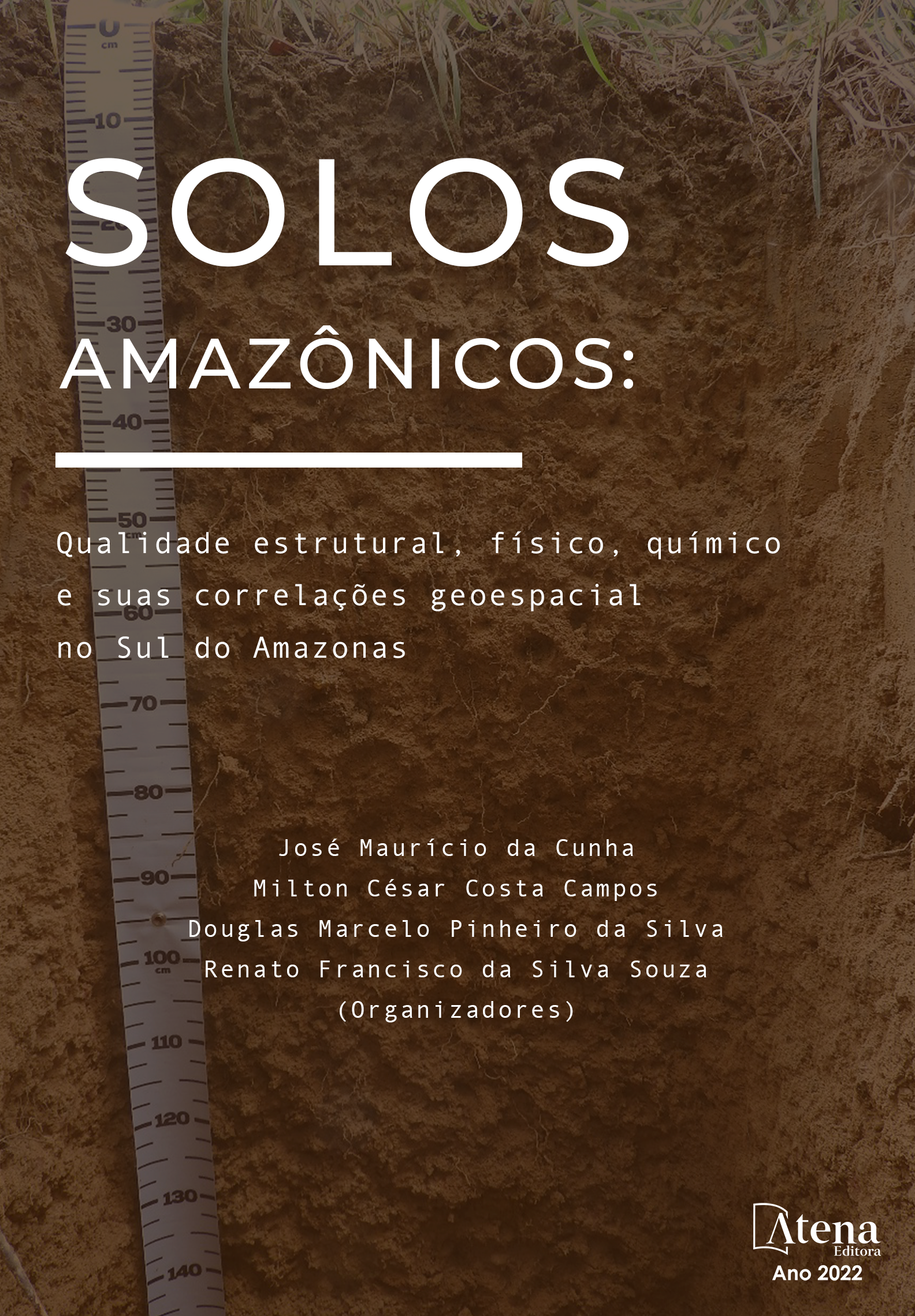
6 - ESTABILIDADE DE AGREGADOS E ESTOQUE DE CARBONO SOB CONVERSÃO DE FLORESTA PARA DIFERENTES SISTEMAS DE CULTIVO NO SUL DO AMAZONAS, BRASIL
Ao longo dos anos o processo de conversão de ecossistemas naturais em áreas cultivadas, assim como sistemas de uso e manejo dos solos tem proporcionado alterações na estabilidade de agregados e nos teores de estoques de carbono dos solos. O presente trabalho teve como objetivo avaliar a estabilidade de agregados e estoque de carbono em áreas sob conversão de floresta para diferentes sistemas de cultivo, utilizando técnicas de estatística tradicional univariada, multivariada e geoestatística. Foram estabelecidas malhas de acordo com as dimensões do cultivo, nas áreas de floresta e guaraná estabeleceu-se malhas de 90 x 70 m e espaçamento regular entre os pontos amostrais de 10 x 10 m, na área de urucum a malha estabelecida foi de 90 x 56 m e espaçamento de 10 x 8 m, já para área de cupuaçu a malha apresentou dimensões de 54 x 42 m, com espaçamento entre os pontos amostrais de 6 x 6 m. Após delimitadas as malhas foram coletadas amostras nos pontos de cruzamento das malhas, nas profundidades de 0,00-0,05; 0,05-0,10; e 0,10-0,20 m, com 80 pontos amostrais em cada área, e totalizando 240 amostras por área. Em cada ponto amostral, coletou-se amostras com estrutura preservada em forma de torrão para determinação da estabilidade dos agregados, textura do solo e carbono orgânico, perfazendo um total de 960 amostras nas quatro áreas avaliadas. O processo de conversão influenciou o estado de agregação do solo, avaliado pelo aumento da dispersão da fração argila e diminuição dos valores DMP, DMG e classes de agregados > 2,00 mm; Os atributos avaliados nas respectivas áreas estudadas se mostraram nos limites do grau de dependência espacial, apresentando dependência variando entre moderada a forte; Na análise multivariada, as áreas de floresta e cupuaçu apresentaram comportamentos semelhantes, com valores de CO, EC, silte, argila e classes de agregados 2 – 1 mm, < 1mm e IEA, acima da média.
6 - ESTABILIDADE DE AGREGADOS E ESTOQUE DE CARBONO SOB CONVERSÃO DE FLORESTA PARA DIFERENTES SISTEMAS DE CULTIVO NO SUL DO AMAZONAS, BRASIL
-
DOI: 10.22533/at.ed.4732219057
-
Palavras-chave: ecossistemas naturais; agregação do solo; sistemas de uso e manejo.
-
Keywords: natural ecosystems; soil aggregation; systems of use and management.
-
Abstract:
In recent years, the process of converting natural ecosystems into cultivated areas, as well as land use and management systems soil, has provided changes in the stability of aggregates and soil carbon stock. The present work aimed to evaluate the stability of aggregates and carbon stock in areas under forest conversion for different cropping systems, using traditional univariate, multivariate and geostatistical statistical techniques. Were established meshes according to the dimensions of cultivation, in the areas of forest and guaraná were established meshes of 90 x 70 m and regular spacing between the sample points of 10 x 10 m, in the area of annatto the established mesh was of 90 x 56 m and spacing of 10 x 8 m, already for area of cupuaçu the mesh had dimensions of 54 x 42 m, with spacing between the sample points of 6 x 6 m. After delimiting the meshes samples were collected at the crossing points of the meshes, at depths of 0.00-0.05; 0.05-0.10; and 0.10-0.20 m, with 80 sampling points in each area, and totaling 240 samples per area. At each sample point, samples were collected with preserved structure in the form of clod to determine the stability of the aggregates, soil texture and organic carbon, making a total of 960 samples in the four areas evaluated. The conversion process influenced soil aggregation, evaluated by increasing clay fraction dispersion and decrease in values DMP, DMG and aggregate classes> 2.00 mm; The attributes evaluated in the respective areas studied were within the limits of the degree of spatial dependence, presenting dependence ranging from moderate to strong; In the multivariate analysis, the forest and cupuaçu areas presented similar behavior, with values of CO, EC, silt, clay and classes of aggregates 2 - 1 mm, <1mm and IEA, above average.
-
Número de páginas: 33
- José Maurício da Cunha


